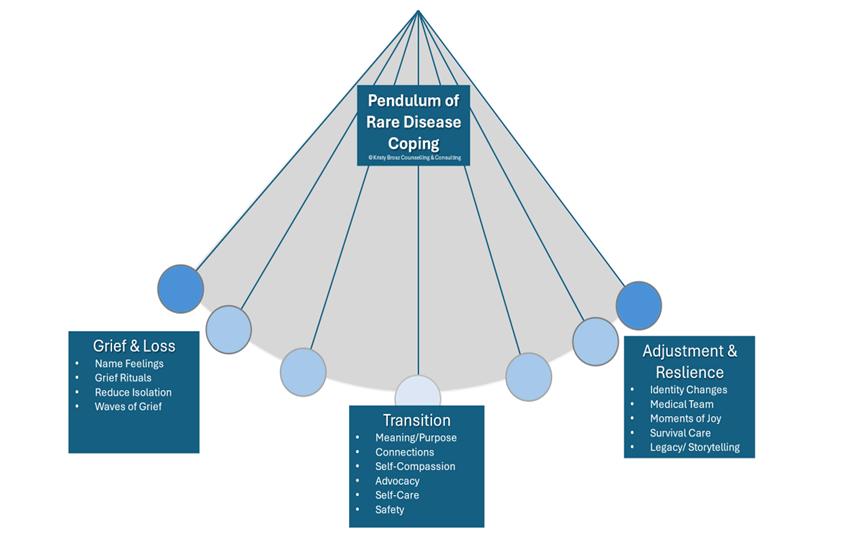
1 minute read
The Pendulum of Rare Disease Coping: Navigating Grief, Loss, and Resilience
by Kristy Brosz, MSW, RCSW
Living with a rare disease is a journey marked by constant shifts—between hope and despair, strength and exhaustion, acceptance and denial. Like a pendulum, the experience of rare disease swings back and forth in response to new diagnoses, treatments, and the everyday logistical realities of chronic illness. The grief that accompanies rare disease is not a singular event but an evolving process, as patients and their loved ones mourn the loss of health, independence, or long-held dreams.
Yet, within this grief, there is also adaptation that allows for a meaningful, unique journey. Coping with chronic illness is not about choosing between despair and resilience—it is about learning to exist in the space between them.
This article explores the duality of grief and coping in rare disease life, offering insights into how patients and their loved ones can navigate the ever-changing fluidity that accompanies rare disease. Like a pendulum, coping is not about staying on one end but continuously moving between grief and resilience.
The figure below outlines this duality by using the Pendulum of Coping with a Rare Disease. It highlights the need to move back and forth between both ends of the pendulum for optimal coping. It also highlights key factors that influence this movement.
Far Left of the Pendulum: Grief & Loss
On the loss end of the pendulum, there are many challenging experiences to explore, including:
Naming Feelings: Grief and loss can bring about many emotions, such as sadness, sorrow, anger, frustration, fear, anxiety, guilt, self-blame, isolation, loneliness, hopelessness, despair, and many others unique to each person. The ability to identify and name these feelings is an important step toward leaning into grief.
Grief Rituals: Patients and their loved ones can engage in unique rituals to explore the layers of loss, which may include the loss of health, independence, control, employment/education, future plans, and others.
Engaging in Supports to Reduce Isolation: A variety of supports—from peer support groups to professional counselling—can help reduce feelings of isolation. The key is ensuring that the connection between the patient and the support system is the right fit for them.
Managing Waves of Grief: Grief and loss are far from linear experiences. Acknowledging that grief comes in waves and learning to ride those waves can be critical to processing its depths.










